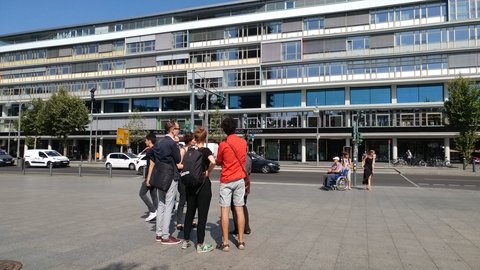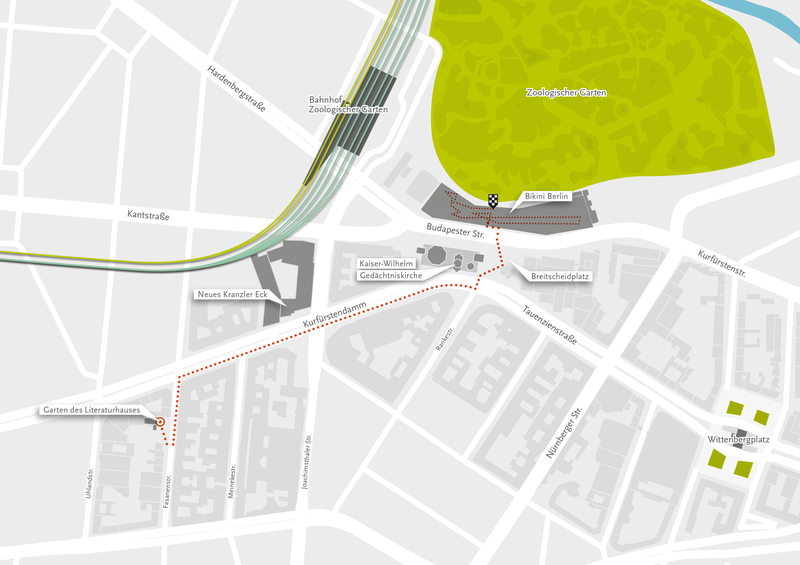
AudioWalk »Shopping and Staging«
»There’s no better place to stroll than West Berlin,« said Marlene Dietrich. As we walk down the boulevard of Ku’damm, shop window displays are interpreted as a temporal intervention in the movements of passers-by and as a chance to reflect on how perception has changed as a result of urbanisation and modernisation, and to consider the emergence of »city dwellers«. The history and development of the show window is related to architectural and material developments, raising questions about the consequences of the new staging strategies. Does the frame of the window really represent the boundaries of the staged situation? What would a shop window be without people to look at it? Where does the staging start? And does it actually stop anywhere? Is there anything that can’t be staged? Adopting an interdisciplinary perspective, we ask what is neutrality, authenticity and naturalness. Can »authenticity« be designed? For example with a DIY aesthetic, such as that found in the »Bikini Berlin« building complex? What is a natural material? And can we »recreate« nature? Scrolling through touchscreens may imitate the veins branching out on a kale leaf, but can we actually reproduce natural growth processes? And in the midst of the staging is the camera. Is there really such a thing as a neutral facial expression? And is money a »neutral« medium of exchange? Shopping environments aim to create emotions and opportunities for identification, in short, the opposite of neutralisation. These reflections exploring many different avenues are linked to the locations and to each other.

Please use headphones and take into account the opening hours of BikiniBerlin.
Free Download of the German AudioWalk here
AudioWalk Download:
optimal sound quality: wav-format
( 1GB)
space-saving: mp3-Format (190MB)
Meer, Julia/Steindorf, Johanna/Lamas Cornejo, Claudia (Konzeption und Koordination) (2018): Inszenieren, Konsumieren. Audiowalk. Dauer: 75 Min. Mit Beiträgen von Lorenzo Guiducci, Juliane Köhler, Julia Meer, Lisa Schreiber, Christof Windgätter. Sounddesign: Jonas Palzer.

